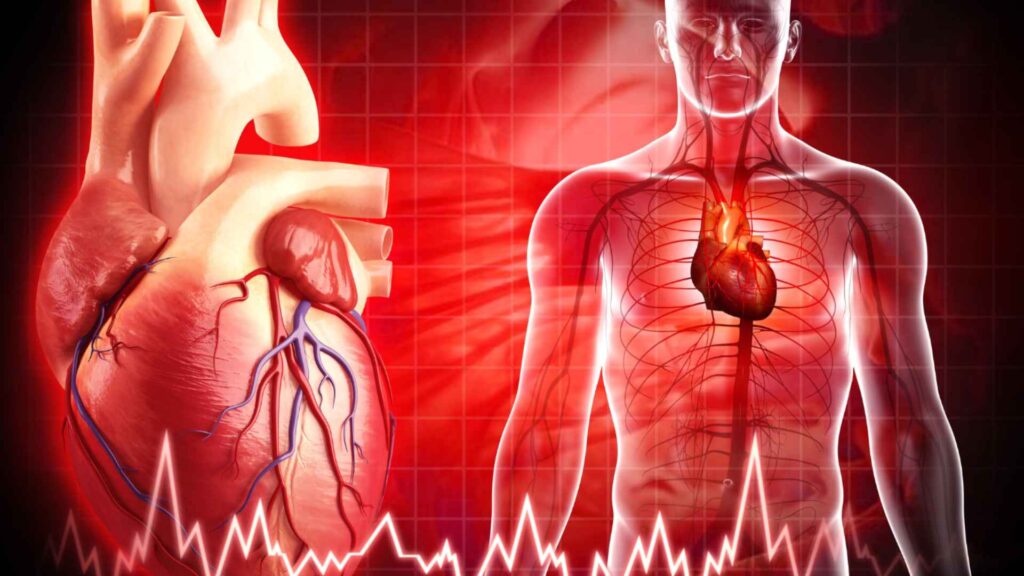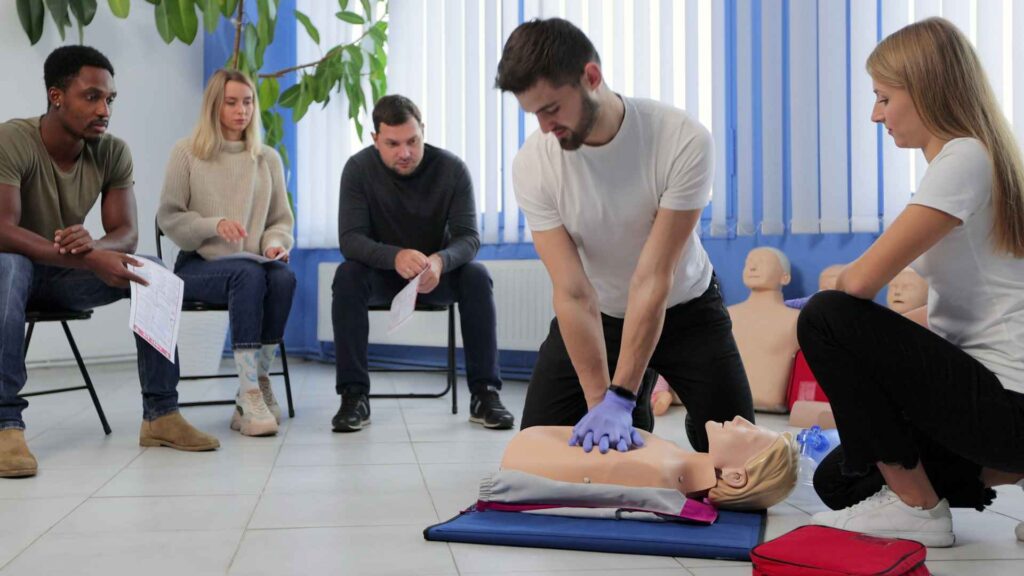IN THIS BLOG
IN THIS BLOG
- Understanding the Difference That Saves Lives
- Understanding the Plumbing and Electrical Systems of the Heart
- Heart Attack: A Plumbing Problem
- Symptoms of a Heart Attack
- What to Do During a Suspected Heart Attack
- Cardiac Arrest: An Electrical Malfunction
- Types of Cardiac Arrest
- Common Causes of Cardiac Arrest
- Factors increasing the risk of cardiac arrest
- Key Differences Between Heart Attack and Cardiac Arrest
- Know the Signs, Take Action: Your Role in Saving Lives
Understanding the Difference That Saves Lives
In the fast-paced world we live in, understanding the difference between a heart attack and cardiac arrest can be the difference between life and death. Both conditions are serious and require immediate medical attention, but they are not the same thing. This blog post will delve into the key distinctions between these two heart emergencies, equipping you with the knowledge to recognize the signs and take life-saving action.
Understanding the Plumbing and Electrical Systems of the Heart
A heart attack occurs the heart muscle is unable to get enough oxygen as a result of a blockage in one of the arteries that feeds it. These blockages are typically caused by a buildup of fatty deposits known as plaque. When blood flow is restricted, the heart muscle becomes starved of oxygen, leading to cell damage and pain.
Heart Attack: A Plumbing Problem

A heart attack occurs the heart muscle is unable to get enough oxygen as a result of a blockage in one of the arteries that feeds it. These blockages are typically caused by a buildup of fatty deposits known as plaque. When blood flow is restricted, the heart muscle becomes starved of oxygen, leading to cell damage and pain.Buy A First Aid Kit
Take care of any small injuries your family or employees receive with our Multi-Purpose First Aid Kit. Treat them with the wide range of supplies included in this kit.
Symptoms of a Heart Attack
Heart attack symptoms can vary widely from person to person. The experience can differ between men and women, and even for the same individual during multiple heart attacks.
Classic Symptoms
- Chest pain or discomfort: pressure, squeezing, tightness, aching, or heaviness
- Persistent pain lasting more than 3-5 minutes
- Not relieved by rest or medication
- Pain spreading to one or both arms, jaw, shoulder, neck, or back
- Breathing problems: shortness of breath, rapid breathing
- Cold, sweaty skin
- Pale, bluish, or ashen skin, lips, and fingers
- Anxiety, denial, or feeling of impending doom
Soft Signs
Soft signs are typically more common in women, elderly, and people with diabetes.
- Mild, intermittent chest discomfort
- Extreme fatigue
- Upset stomach, nausea, or vomiting
- Flu-like symptoms
- Dizziness or light-headedness
It’s important to note that not everyone experiences all of these symptoms, and some people may experience only mild pain or discomfort. If you suspect you or someone you know is having a heart attack, call 911 immediately.
Register For A First Aid Training
What to Do During a Suspected Heart Attack

- Call 911 immediately and request an AED (Automated External Defibrillator).
- Have the person rest comfortably.
- Administer one adult-dose (160-325 mg) of aspirin, if available and the person is not allergic or has a bleeding disorder.
- Assist with nitroglycerin medication, if prescribed, by helping the person spray or place it under their tongue.
- Reassure the person to help reduce anxiety.
Cardiac Arrest: An Electrical Malfunction
 Cardiac arrest, on the other hand, is an electrical problem. It happens when the heart’s electrical signals malfunction, causing the heart to stop beating effectively or fibrillate (quiver irregularly). This sudden disruption in blood flow quickly deprives the brain and other vital organs of oxygen, leading to unconsciousness and, if not treated promptly, death.
Cardiac arrest, on the other hand, is an electrical problem. It happens when the heart’s electrical signals malfunction, causing the heart to stop beating effectively or fibrillate (quiver irregularly). This sudden disruption in blood flow quickly deprives the brain and other vital organs of oxygen, leading to unconsciousness and, if not treated promptly, death.Types of Cardiac Arrest
- Sudden Cardiac Arrest: This happens unexpectedly without warning signs. While people with heart conditions are at higher risk, it can affect anyone. Immediate care is crucial for survival.
- Clinical Death: This occurs when breathing and heartbeat cease. Brain damage begins after 4-6 minutes, but immediate intervention can reverse this.
Biological Death: Irreversible brain damage happens after about 8-10 minutes without oxygen. This is also known as brain death.
Common Causes of Cardiac Arrest
Cardiac arrest can be triggered by various factors. The most common cause is underlying heart disease. However, other conditions can also lead to this life-threatening emergency.
Common causes of cardiac arrest include:
- Cardiovascular disease
- Drowning
- Severe blood loss
- Suffocation or choking
- Electrocution
- Drug overdose
- Severe chest injuries
- Commotio cordis (a blunt impact to the chest)
- Other heart conditions
Factors increasing the risk of cardiac arrest:
- Pre-existing heart conditions, including congenital heart defects
- Breathing emergencies like choking or drowning, which deprive the body of oxygen
Note: It’s crucial to remember that cardiac arrest is a medical emergency requiring immediate attention. While other injuries might be present, prioritizing CPR and using an AED is essential.
Cardiac arrest can occur without any warning signs. If you witness someone experiencing cardiac arrest, immediately call 911 and begin CPR if you are trained.
Key Differences Between Heart Attack and Cardiac Arrest
| Feature | Heart Attack | Cardiac Arrest |
| Cause | Blockage in coronary arteries | Disruption of heart’s electrical signals |
| Symptoms | Chest pain, discomfort, shortness of breath, nausea | Sudden collapse, no pulse, no breathing |
| Onset | Gradual or sudden | Sudden and unexpected |
| Treatment | Medication, surgery, lifestyle changes | CPR, defibrillation |
Know the Signs, Take Action: Your Role in Saving Lives
While both heart attack and cardiac arrest are emergencies, understanding the key differences can empower you to take life-saving action. Here are some essential takeaways:
- Be aware of the warning signs of both heart attack and cardiac arrest.
- If you or someone you know is experiencing a heart attack, call 911 immediately. Delays in treatment can significantly increase the risk of complications.
- If you witness someone experiencing cardiac arrest, call 911 immediately and begin CPR if you are trained. Every minute counts in a cardiac arrest situation.
- Learn CPR. Equipping yourself with CPR skills can make a critical difference in someone’s survival. Many organizations offer CPR training courses in Canada.
By understanding the distinctions between heart attack and cardiac arrest, you can play a vital role in protecting your own health and
We highly recommend completing a First Aid & CPR training course to learn more about emergency situations and how to handle them.



















